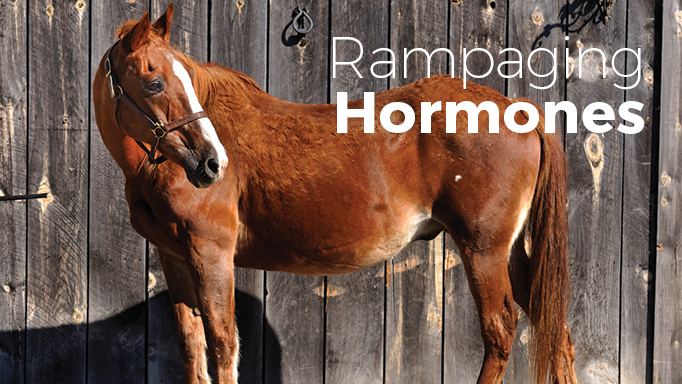If you have spent any time around older horses, chances are you have been in contact with one that has Equine Pituitary Pars Intermedia Dysfunction (PPID). Equine PPID is a better definition for the endocrine disorder commonly known as Cushing’s syndrome.
The pituitary gland lives at the base of the horse’s brain and acts as the command centre for regulation of multiple hormone interactions, feedback loops, and bodily functions. PPID occurs when neurons in the hypothalamus, also located at the base of the brain, progressively degenerate and it produces insufficient quantities
of the neurotransmitter dopamine. When the pars intermedia (the middle lobe) of the pituitary gland is not exposed to enough dopamine, it becomes enlarged and produces abnormally high levels of hormones such as adrenocorticotropic hormone (ACTH) that regulate various systems within the body. This enlargement can compress the adjacent structures, resulting in a lack of function and causing even more disregulation of hormones within the body.
Clinical signs of PPID can vary based on the severity of the disorder. They include excessive drinking and urination, laminitis, lethargy, repeated infections such as foot abscesses, and most commonly, a potbelly and a long, curly hair coat (hirsutism) that does not shed out in the summer.
These clinical signs are most often seen in horses over 15 years old, but horses as young as seven have been diagnosed with this disorder. There does not seem to be a breed or sex predilection to developing PPID, as any breed can be diagnosed with it. Both male and female horses are affected equally.
Horses with PPID are also more likely to be insulin-resistant. Insulin is a hormone that drives glucose (sugar) uptake into cells. When a horse (or human) is insulin-resistant, they fail to appropriately respond to an excess of sugar available after a meal. In horses, this results in muscle loss, abnormal fatty deposits, laminitis, excessive water consumption, and increased susceptibility to other diseases.
Diagnosing a horse with PPID starts with recognizing the clinical signs. A long hair coat that is still present during a spring vaccine visit will often prompt your vet to ask about other clinical signs you may have noticed, and to take a blood test to confirm a diagnosis. While no blood test is 100% accurate, measuring resting ACTH levels in the blood is a fairly reliable way to confirm a PPID diagnosis.
Treatment of PPID is usually successful, but will not result in complete remission of the condition. The drug of choice is pergolide, a dopamine receptor agonist that was originally introduced as a human medication used to treat patients with Parkinson’s disease. This medication helps to down-regulate the hormones produced by the overactive pituitary gland, resulting in resolution of clinical signs.
If you suspect your horse might have PPID, it is important to speak to your vet about testing for the disorder. Getting early control is key to preventing life-threatening side-effects such as laminitis. Thankfully, with treatment, proper nutrition, and exercise, horses diagnosed with PPID can live long, happy lives.

